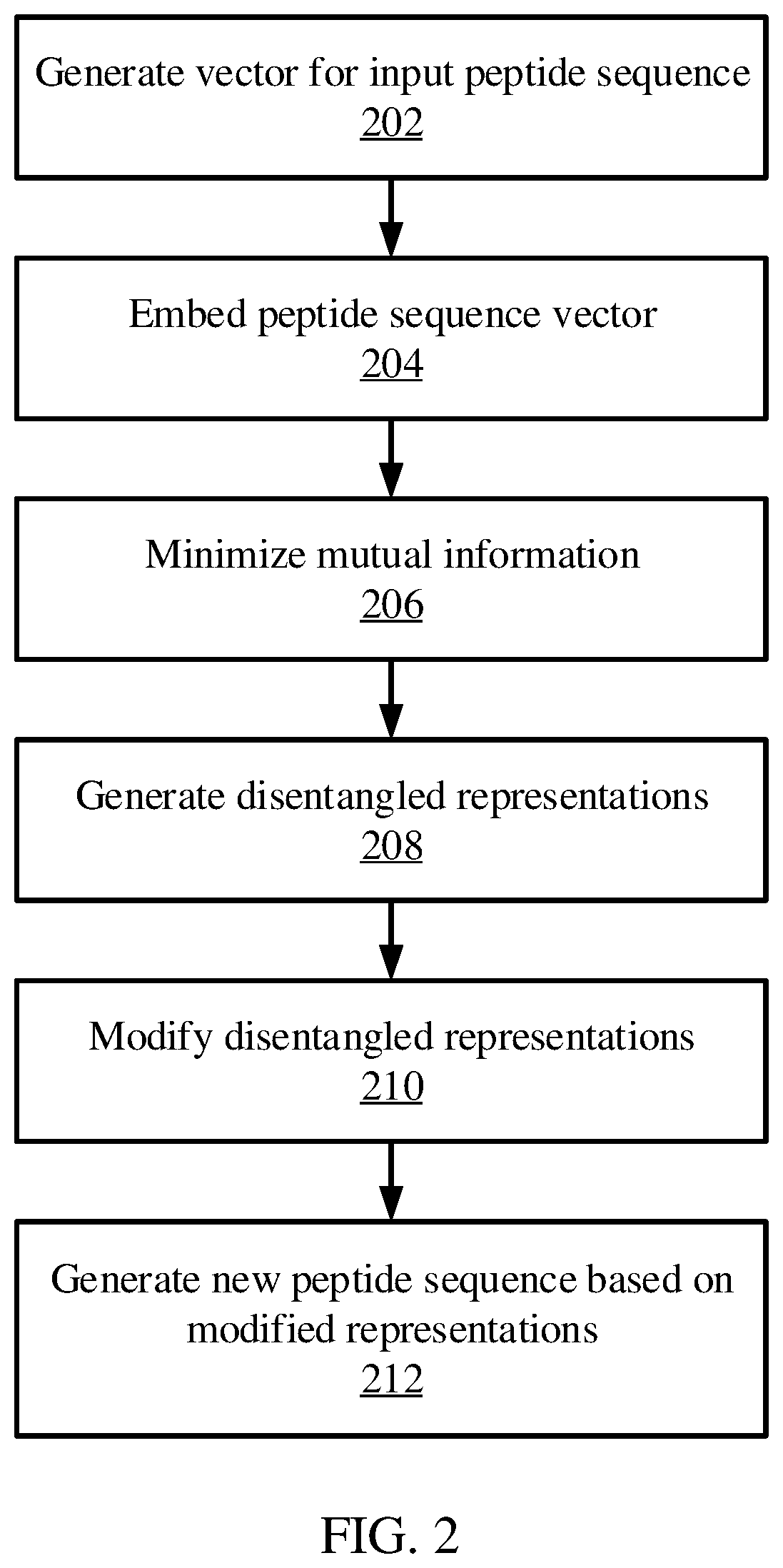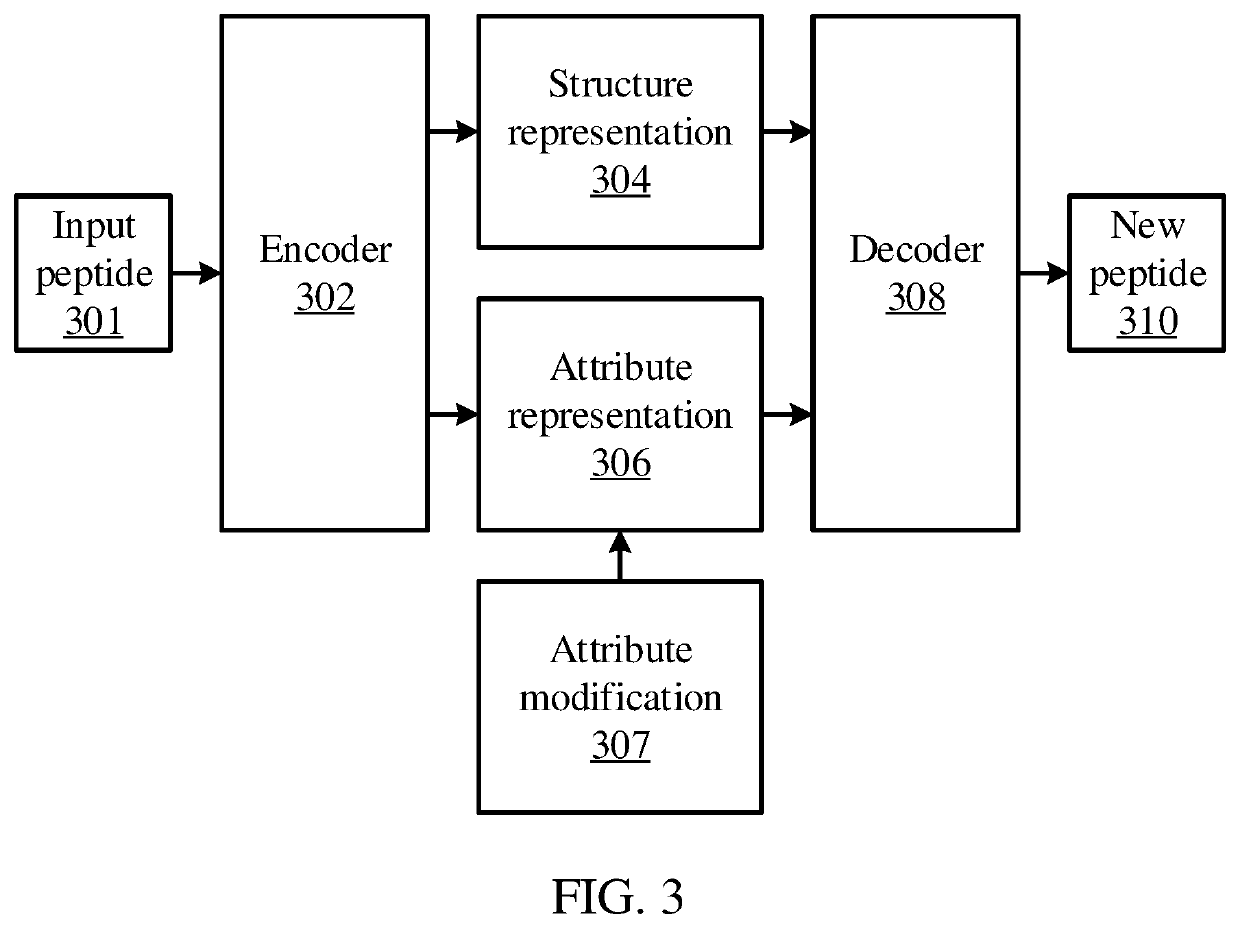Peptide-based vaccine generation
a technology of peptides and vaccines, applied in the field of peptide searching, can solve the problems of lacking tools for generating new binding peptides with new specified properties from existing binding peptides, and achieve the effect of improving vaccine efficacy
- Summary
- Abstract
- Description
- Claims
- Application Information
AI Technical Summary
Benefits of technology
Problems solved by technology
Method used
Image
Examples
Embodiment Construction
[0017]Strongly binding peptides can be generated given a set of existing positive binding peptide examples for a major histocompatibility complex (MHC) protein. For example, a regularized Wasserstein autoencoder may be used to generate disentangled representations of a peptide. These disentangled representations may include a first representation of structural information for the peptide, and a second representation for attribute information for the peptide. The disentangled representations may then be altered to change the properties of the peptide, and the autoencoder's decoder may then be used to convert the altered disentangled representations into a new peptide that has the desired attributes.
[0018]Prediction of binding peptides for MHC proteins is helpful in vaccine research and design. Once a binding peptide for an MHC protein has been identified, it can be used in the generation of a new peptide vaccine with new properties to target a pathogen, such as a virus. The existing ...
PUM
 Login to View More
Login to View More Abstract
Description
Claims
Application Information
 Login to View More
Login to View More - R&D
- Intellectual Property
- Life Sciences
- Materials
- Tech Scout
- Unparalleled Data Quality
- Higher Quality Content
- 60% Fewer Hallucinations
Browse by: Latest US Patents, China's latest patents, Technical Efficacy Thesaurus, Application Domain, Technology Topic, Popular Technical Reports.
© 2025 PatSnap. All rights reserved.Legal|Privacy policy|Modern Slavery Act Transparency Statement|Sitemap|About US| Contact US: help@patsnap.com



